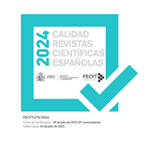Emotion and culture of eye-metaphors in Mandarin, Spanish and German
Resumen
This study attempts to give a cognitive semantic study of eye expressions (EEs) in Chinese, Spanish and German. The majority of the data are collected from corpora and dictionaries. The research questions are: (1) Is the BODY IS STATIC hypothesis proposed by Hsieh and Lu (2012) valid? (2) Do the verbs in EEs showing emotions suggest something? And, (3) what cultural aspects do the EEs in three languages involve? The results show that the analysis of semantic molecules and tenors of the EEs confirm the validity of BODY IS STATIC hypothesis. The verbs of the EEs play an important role in expressing emotion. The verbs that are inherited for other body parts, such as for hand, mouth, are extended to the sight domain and assist such emotion communication effectively. Bodily experiences work in linguistic as a whole as well. Finally, cultural aspects of social behavior and social communication in the specific social groups are shown. They are all revealed through a cross-cultural linguistic comparison.Descargas
Descarga artículo
Licencia
La revista Círculo de Lingüística Aplicada a la Comunicación, para fomentar el intercambio global del conocimiento, facilita el acceso sin restricciones a sus contenidos desde el momento de su publicación en la presente edición electrónica, y por eso es una revista de acceso abierto. Los originales publicados en esta revista son propiedad de la Universidad Complutense de Madrid y es obligatorio citar su procedencia en cualquier reproducción total o parcial. Todos los contenidos se distribuyen bajo una licencia de uso y distribución Creative Commons Reconocimiento 4.0 (CC BY 4.0). Esta circunstancia ha de hacerse constar expresamente de esta forma cuando sea necesario. Puede consultar la versión informativa y el texto legal de la licencia.











